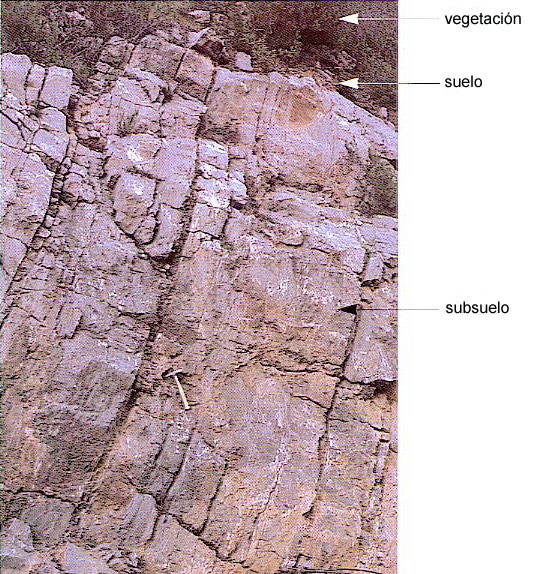Studying outcrops is the key to analyse earth’s crust materials. This is a part of geologists’ fieldwork.
Outcrops are generally made up of some vegetation on the top and then a layer of organic matter from plants degradation or mineral matter from rocks alteration. The layer with vegetation is called soil. Generally, we call everything under the soil subsoil, conformed by rocky formations.
A good analyse of outcrops contributes to obtain the indispensable information so as subsoil information is interpreted. It must give us some information about:
- Different kinds of materials: present rocks and other components.
- Materials structuring in units divided or not in layers and its location in space, joints, faults, etc.
- Relation between units of material, that is their age order.
Interpreting these characteristics allows us to obtain the succession of events that have been taking place all over the years in order to create the materials studied and its properties, which constitutes the geologic history of this area.
Studying outcrops will be our starting in fieldwork, which tries to take as most information as possible from direct observation of the place that is being studied in order to interpret it afterwards. As in all observation works, a guide that help us to get information is essential. Because of that we propose you a guideline to study outcrops that you should try out visiting some outcrops around you.


